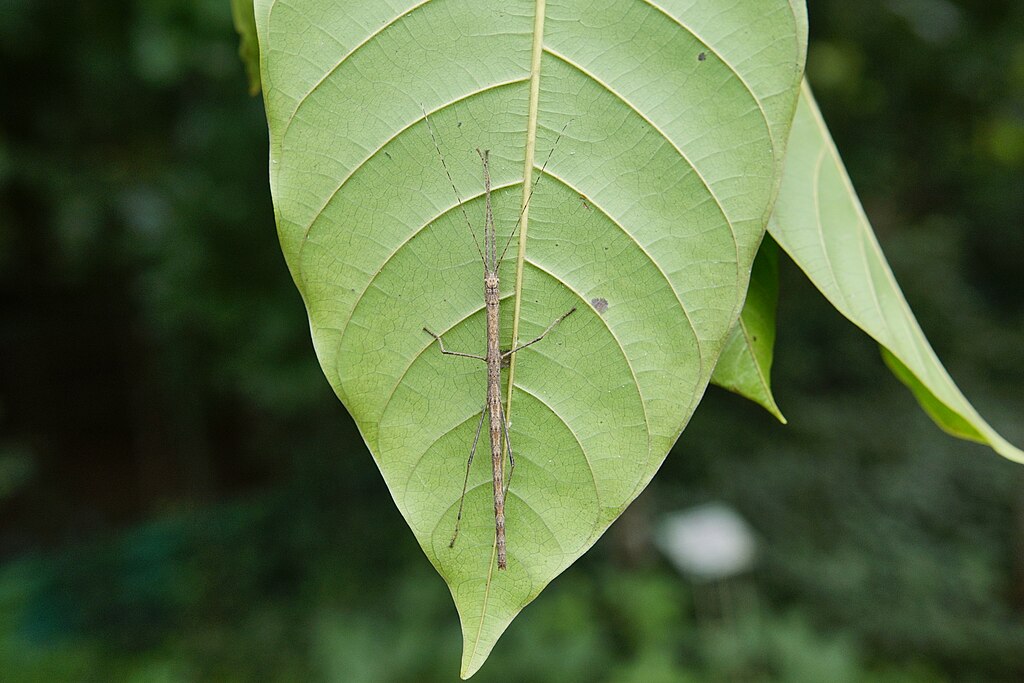In the grand theater of nature, insects have mastered the art of deception like no other creatures on Earth. These tiny performers put on elaborate disguises, adopt convincing personas, and execute flawless impersonations that would make Hollywood’s best actors jealous. From pretending to be deadly snakes to mimicking toxic flowers, these remarkable creatures have evolved some of the most sophisticated survival strategies in the animal kingdom. Their ability to transform their appearance and behavior isn’t just impressive—it’s often the difference between life and death in the wild.
The Stick Bug’s Masterpiece of Stillness
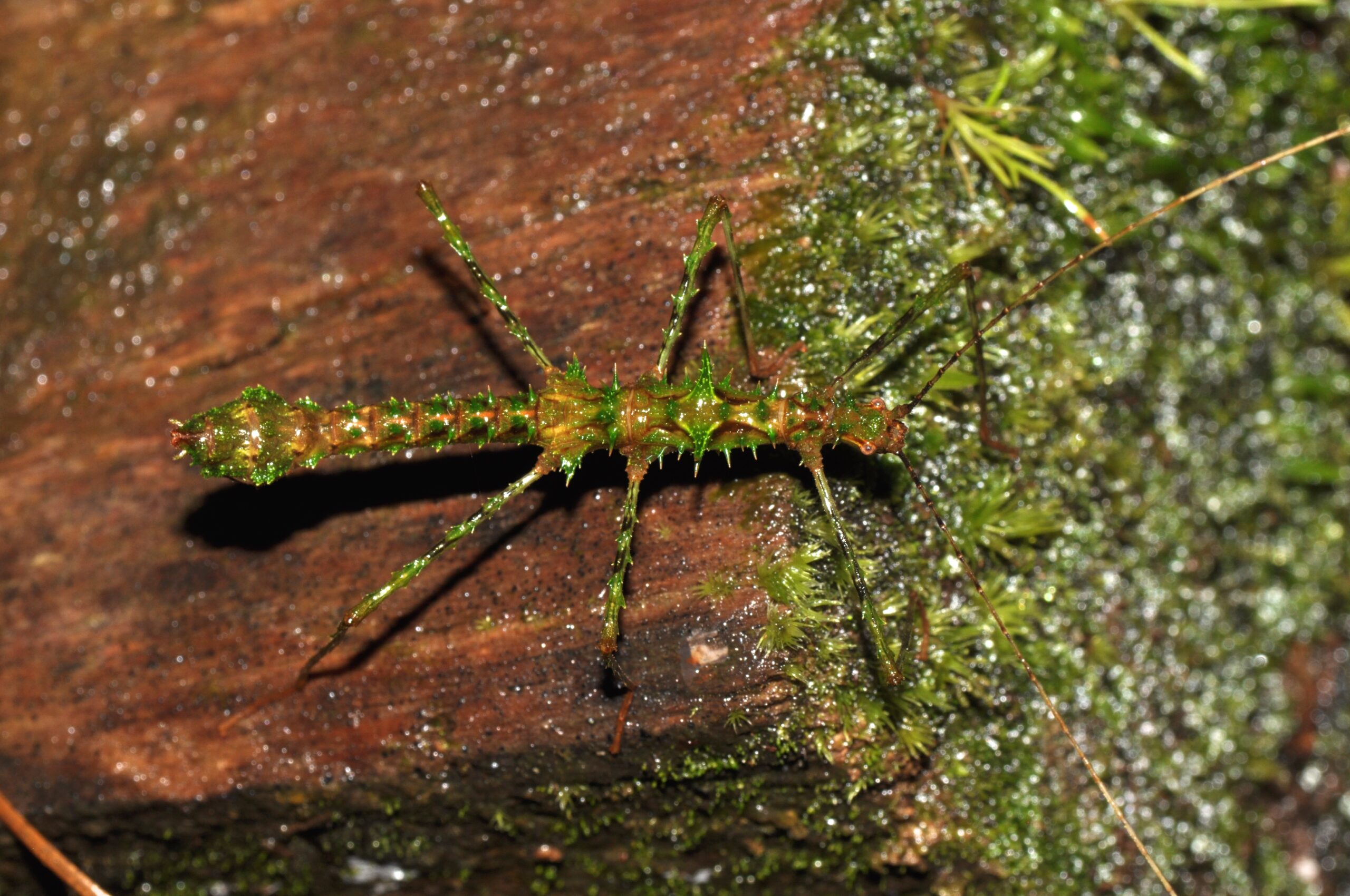
When you think of impressive disguises, stick insects immediately come to mind as the ultimate masters of camouflage. These remarkable creatures have perfected the art of becoming invisible by transforming themselves into perfect replicas of twigs, branches, and dried leaves. Their bodies stretch and contort to match the exact dimensions of plant matter, complete with realistic bark-like textures and natural coloring that shifts based on their surroundings. What makes stick insects truly extraordinary is their commitment to their performance. They’ll remain motionless for hours, swaying gently only when a breeze moves the real branches around them. Some species even have leg segments that look exactly like leaf buds or small thorns, adding layers of authenticity to their disguise. The giant stick insect of Southeast Asia takes this mastery to almost absurd levels, growing up to 22 inches long while maintaining its perfect twig impression. These insects have essentially become living sculptures, blurring the line between animal and plant in ways that continue to baffle even experienced naturalists.
Orchid Mantises: The Floral Predators

The orchid mantis represents one of nature’s most stunning examples of aggressive mimicry, where predators disguise themselves as something harmless to lure unsuspecting prey. These incredible insects transform themselves into perfect replicas of orchid flowers, complete with petal-like leg extensions and coloring that matches specific flower species. Their white and pink bodies blend seamlessly with real orchid blooms, making them virtually indistinguishable from the genuine article. What’s particularly fascinating about orchid mantises is how they’ve evolved to exploit the behavior of their prey. Pollinating insects, drawn to what appears to be a beautiful flower, land directly on the mantis only to discover their fatal mistake. The mantis remains perfectly still, maintaining its floral disguise until the perfect moment to strike. Recent studies have shown that orchid mantises are so convincing that they actually attract more pollinators than real orchid flowers. This level of evolutionary perfection demonstrates how millions of years of natural selection can create deceptions so complete they surpass the originals they’re imitating.
The Caterpillar That Becomes a Snake
The hawkmoth caterpillar has developed one of the most dramatic transformation tricks in the insect world. When threatened, this seemingly harmless caterpillar retracts its head and inflates its posterior end, revealing eye-like markings that create the perfect illusion of a dangerous snake’s head. The transformation happens in seconds, turning a vulnerable plant-eater into an apparent threat that sends birds and other predators fleeing. This remarkable display involves more than just visual trickery. The caterpillar also changes its posture, rearing up like a striking snake and even moving in serpentine motions that enhance the illusion. The eye spots are positioned and colored so precisely that they create the three-dimensional appearance of a snake’s head, complete with realistic depth and shading. The effectiveness of this deception is so complete that even experienced researchers have been momentarily fooled by the transformation. It’s a perfect example of how evolution can craft elaborate theatrical performances that serve as life-saving defense mechanisms.
Ant-Mimicking Spiders: The Ultimate Infiltrators
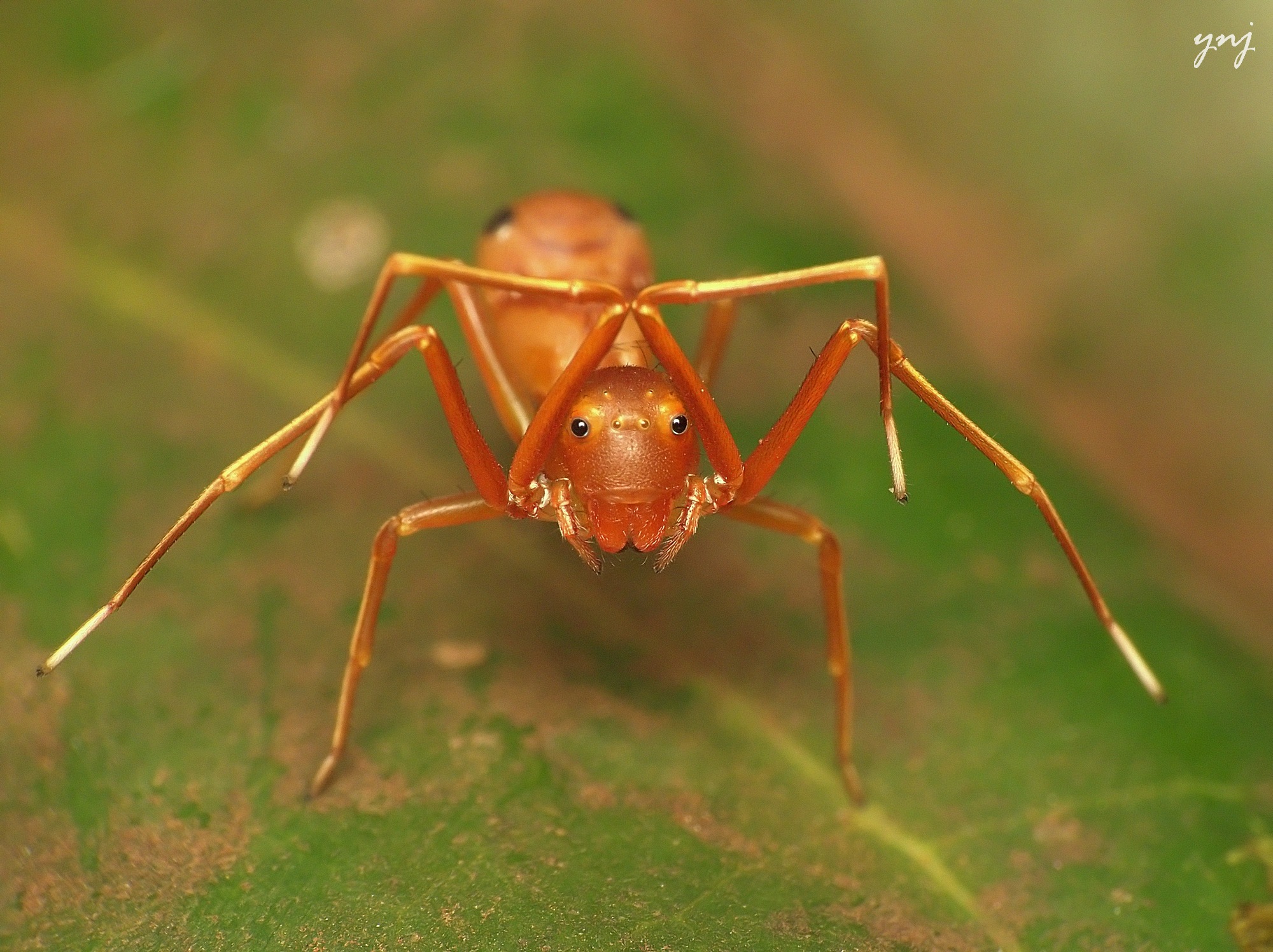
While not technically insects, jumping spiders that mimic ants deserve recognition for their incredible ability to infiltrate ant colonies through perfect impersonation. These remarkable arachnids have modified their body proportions, movement patterns, and even their leg positioning to create flawless ant impressions. They hold their front legs up like antennae, move in the characteristic quick, jerky motions of ants, and even adopt ant-like social behaviors. The precision of this mimicry extends to species-specific details. Different spider species have evolved to imitate particular ant species, matching not just general appearance but specific behavioral traits and movement patterns. Some even mimic the way certain ants carry food or interact with colony members. This elaborate disguise serves multiple purposes: it allows the spiders to hunt ant prey without being detected, and it provides protection from predators who avoid ants due to their aggressive nature and painful bites. The spiders essentially become invisible members of ant society, living double lives that would challenge any undercover agent.
Bumblebee Clearwing Moths: The Fuzzy Fraud

The bumblebee clearwing moth has evolved to become a nearly perfect bumblebee impersonator, complete with fuzzy yellow and black coloring, transparent wings, and even the characteristic hovering flight pattern of its model species. These day-flying moths have abandoned the typical moth lifestyle to become convincing bee mimics, gaining protection from predators who associate their appearance with painful stings. What makes these moths particularly impressive is their attention to behavioral detail. They visit the same flowers as real bumblebees, hover in similar patterns, and even produce a buzzing sound that mimics bee flight. Their wings have lost most of their scales to become transparent, creating the glassy appearance typical of bee wings. The deception is so complete that amateur naturalists regularly mistake these moths for actual bees. This Batesian mimicry—where harmless species mimic dangerous ones—represents one of evolution’s most elegant solutions to the predator-prey arms race.
The Leafhopper’s Thorn Disguise
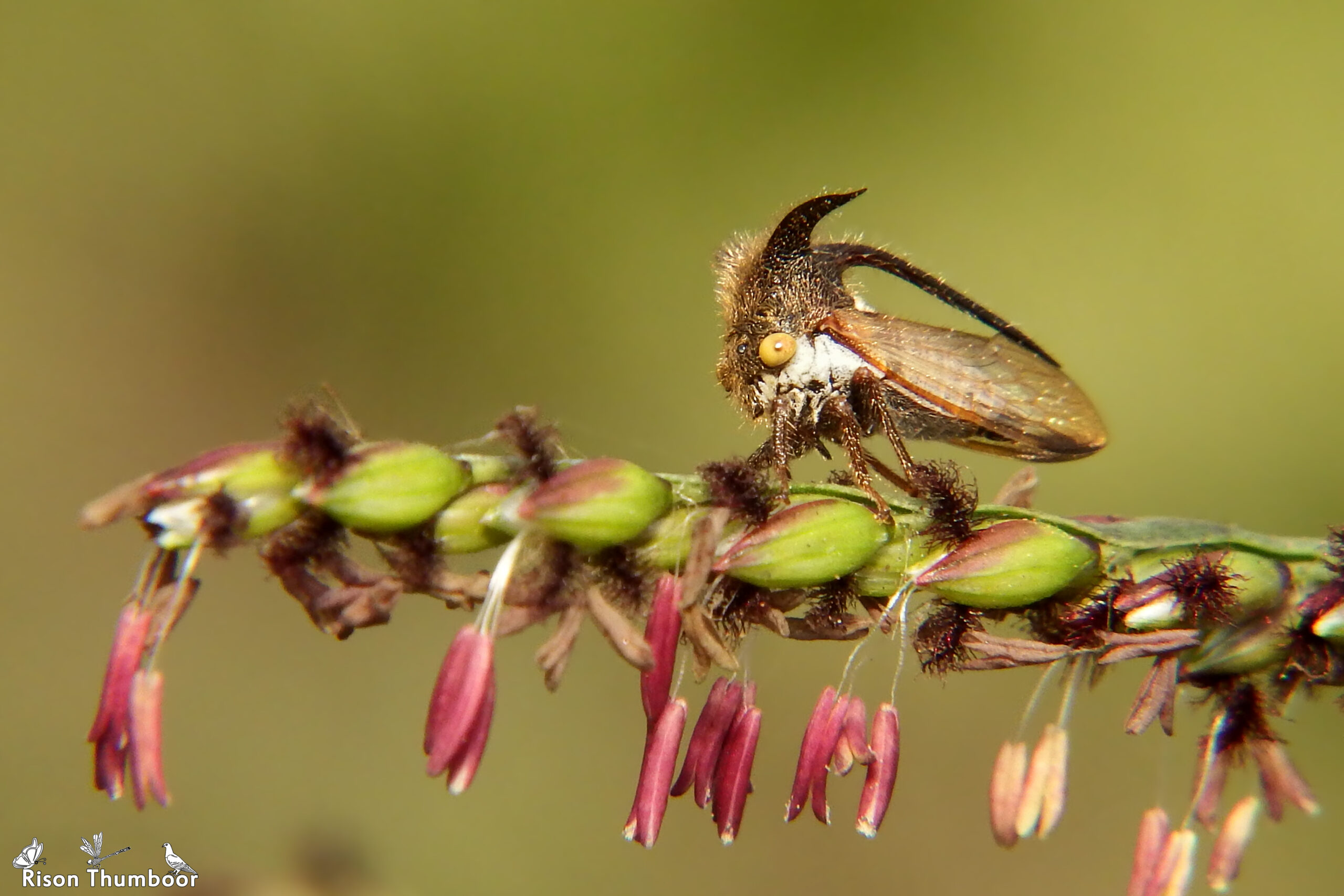
Treehopper insects have developed some of the most bizarre and creative disguises in the insect world, with many species sporting elaborate protrusions that make them look like thorns, seeds, or even bird droppings. These structures, called pronotal extensions, can be incredibly complex, featuring multiple spikes, bulbous growths, and intricate textures that perfectly mimic non-living plant parts. The buffalo treehopper, for instance, has developed a triangular extension that makes it look exactly like a rose thorn when viewed from the side. When multiple individuals cluster on a branch, they create the illusion of a naturally thorny plant stem, complete with realistic spacing and positioning. Some tropical species have taken this concept to artistic extremes, developing extensions that look like miniature sculptures or abstract art pieces. These aren’t just random growths—each structure has been precisely shaped by natural selection to provide optimal camouflage in the insect’s specific habitat.
Wasp Beetles: The Stinging Imposters

Wasp beetles have mastered the art of looking dangerous without actually being dangerous, developing yellow and black striped patterns that perfectly mimic wasps and hornets. These harmless longhorn beetles move with the quick, darting motions of wasps and even hold their antennae in positions that resemble wasp antennae, creating a convincing illusion of a stinging insect. The deception extends to their behavior patterns as well. Wasp beetles are often seen visiting flowers in the same manner as real wasps, and they’ll even adopt aggressive postures when threatened, rearing up and moving in ways that suggest they’re preparing to sting. Their wing covers create the characteristic narrow-waisted appearance of wasps when viewed from above. This mimicry is particularly effective because it exploits predators’ learned avoidance of painful wasp stings. Birds and other animals that have experienced wasp encounters give these beetles a wide berth, allowing the harmless imposters to go about their business unmolested.
The Sphinx Moth’s Hummingbird Act

Sphinx moths, particularly the hummingbird clearwing species, have evolved to become remarkably convincing hummingbird mimics. These day-flying moths hover at flowers with rapid wing beats, extend long proboscises to reach nectar, and even produce the characteristic humming sound of hummingbird wings. Their robust, streamlined bodies and flight patterns are so similar to actual hummingbirds that they regularly fool casual observers. The moths’ ability to hover precisely at flower openings while feeding requires incredible flight control and energy expenditure. They’ve developed specialized wing muscles and flight mechanics that allow them to match the hovering abilities of much larger hummingbirds, despite their fundamentally different body structure. This convergent evolution—where unrelated species develop similar traits—demonstrates how environmental pressures can shape organisms in remarkably similar ways. The moths gain protection from predators who associate their hummingbird-like appearance with larger, more formidable creatures that are best left alone.
Beetle Mimics: The Tiny Hornets
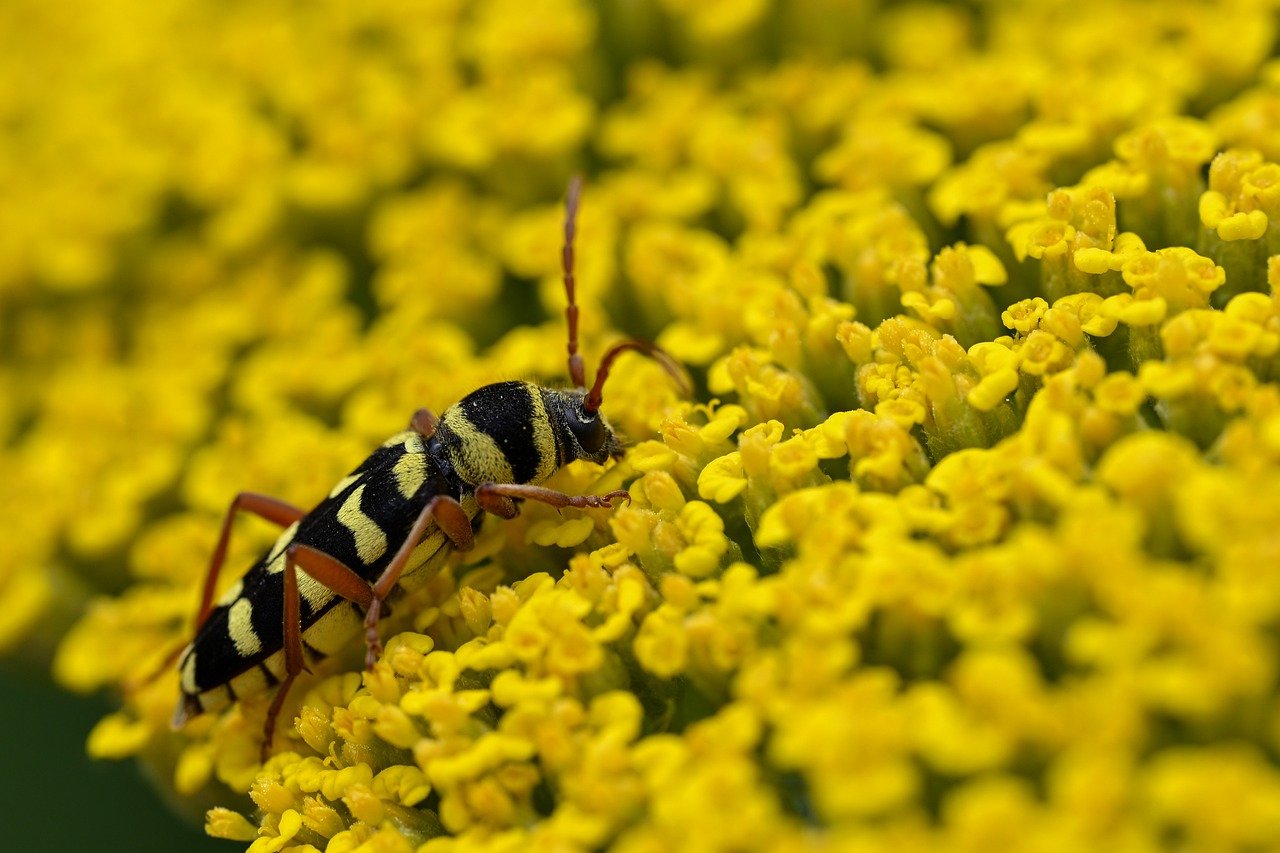
Several species of beetles have evolved to mimic hornets and large wasps, developing not just the characteristic yellow and black coloration but also the body proportions and movement patterns of their models. These beetles often have elongated bodies, narrow waists (created by clever color patterns), and rapid, darting movements that enhance their wasp-like appearance. The most convincing of these mimics even modify their leg positioning and antenna movements to match those of real wasps. Some species have developed the ability to produce buzzing sounds that closely match the flight tones of their model species, adding an auditory component to their visual deception. These beetle mimics are particularly common in areas where large, aggressive wasps are abundant, suggesting that the mimicry evolved as a direct response to the presence of these intimidating models. The beetles essentially “borrow” the fearsome reputation of wasps without having to develop actual stinging abilities.
The Geometric Moth’s Twig Performance

Geometric moth caterpillars, also known as inchworms, have developed one of the most convincing twig impersonations in the insect world. When threatened, these caterpillars grip a branch with their rear legs and extend their bodies at precise angles, becoming virtually indistinguishable from small twigs or plant stems. Their coloration matches the bark of their host plants perfectly, and they can remain motionless in this position for hours. What makes their performance particularly impressive is their ability to choose the perfect angle and position for their disguise. They seem to instinctively know exactly how to align their bodies to match the natural growth patterns of the branches around them, creating seamless integration with their environment. Some species have even developed small protrusions and texture variations that mimic the bark patterns, leaf scars, and bud formations found on real twigs. This level of detail makes their camouflage nearly perfect, allowing them to feed and grow while remaining invisible to predators.
Fly Mimics: The Bee and Wasp Wannabes

Numerous fly species have evolved to mimic bees and wasps, developing yellow and black coloration, fuzzy bodies, and behavioral patterns that closely match their stinging models. Hover flies, in particular, have become master mimics, with different species specializing in imitating specific bee or wasp species found in their local environments. These flies often visit the same flowers as their models, hover in similar patterns, and even produce buzzing sounds that match those of real bees. Some species have developed specialized wing patterns that create the illusion of a narrow waist when viewed from above, one of the key visual characteristics that distinguishes wasps from flies. The effectiveness of this mimicry varies depending on the observer’s experience and the quality of the disguise. While expert entomologists can usually distinguish the mimics from their models, casual observers and many predators are completely fooled by these elaborate performances.
The Cuckoo Bee’s Social Deception

Cuckoo bees represent a fascinating example of social mimicry, where one species evolves to infiltrate and exploit the social structures of another. These parasitic bees have developed the ability to mimic the appearance, scent, and behavior of their host species so completely that they can enter host colonies undetected and lay their eggs in the hosts’ nests. The level of deception involved is extraordinary, requiring the cuckoo bees to match not just visual appearance but also chemical signatures and behavioral cues. They must navigate complex social hierarchies and avoid detection by worker bees who are constantly on guard against intruders. Some cuckoo bee species have evolved to mimic multiple host species, developing different color forms and behaviors depending on which colonies they’re targeting. This flexibility in deception represents one of the most sophisticated examples of social parasitism in the insect world.
Protective Mimicry: The Survival Strategy

The phenomenon of insects pretending to be something else entirely represents millions of years of evolutionary refinement, where natural selection has shaped elaborate deceptions that serve as powerful survival tools. These masquerades aren’t just interesting curiosities—they’re sophisticated adaptations that have allowed countless species to thrive in environments filled with predators and competitors. The success of these deceptions depends on the precise balance between the costs and benefits of maintaining elaborate disguises. Developing and maintaining complex mimicry requires significant energy investment, but the survival advantages often far outweigh these costs. Species that perfect their disguises gain access to new ecological niches and can exploit resources that would otherwise be too dangerous to pursue. Understanding these remarkable adaptations gives us insight into the incredible creativity of evolutionary processes. Each of these insect impersonators represents a unique solution to the challenges of survival, demonstrating how life finds ways to adapt and thrive even in the most challenging circumstances.
The Future of Insect Deception
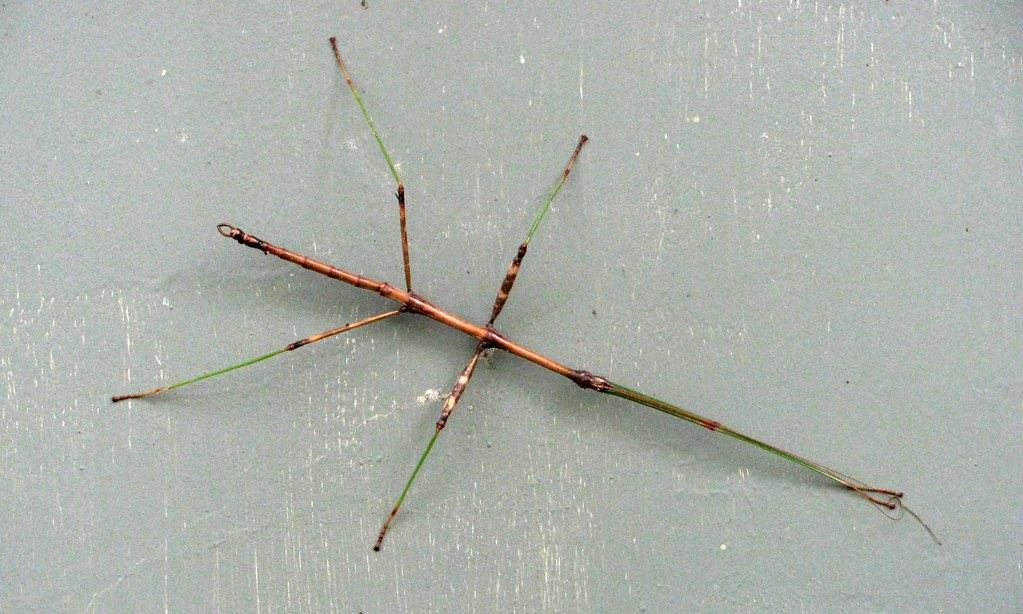
As our understanding of insect mimicry continues to evolve, researchers are discovering new examples of deception and uncovering the genetic and developmental mechanisms that make these elaborate disguises possible. Modern techniques in molecular biology and behavioral analysis are revealing the subtle details of how these impersonations work and why they’re so effective. Climate change and habitat destruction are creating new pressures on these specialized species, potentially disrupting the delicate relationships between mimics and their models. Some species may need to evolve new deceptions or modify existing ones to survive in changing environments, while others may lose the ecological contexts that make their mimicry effective. The study of insect mimicry also has practical applications in fields ranging from robotics to materials science, where researchers are learning to create artificial systems that can change appearance and behavior in response to environmental conditions. These tiny masters of deception continue to inspire human innovation while reminding us of the incredible diversity and ingenuity of life on Earth. What other secrets might these shape-shifting performers be hiding in plain sight around us?

